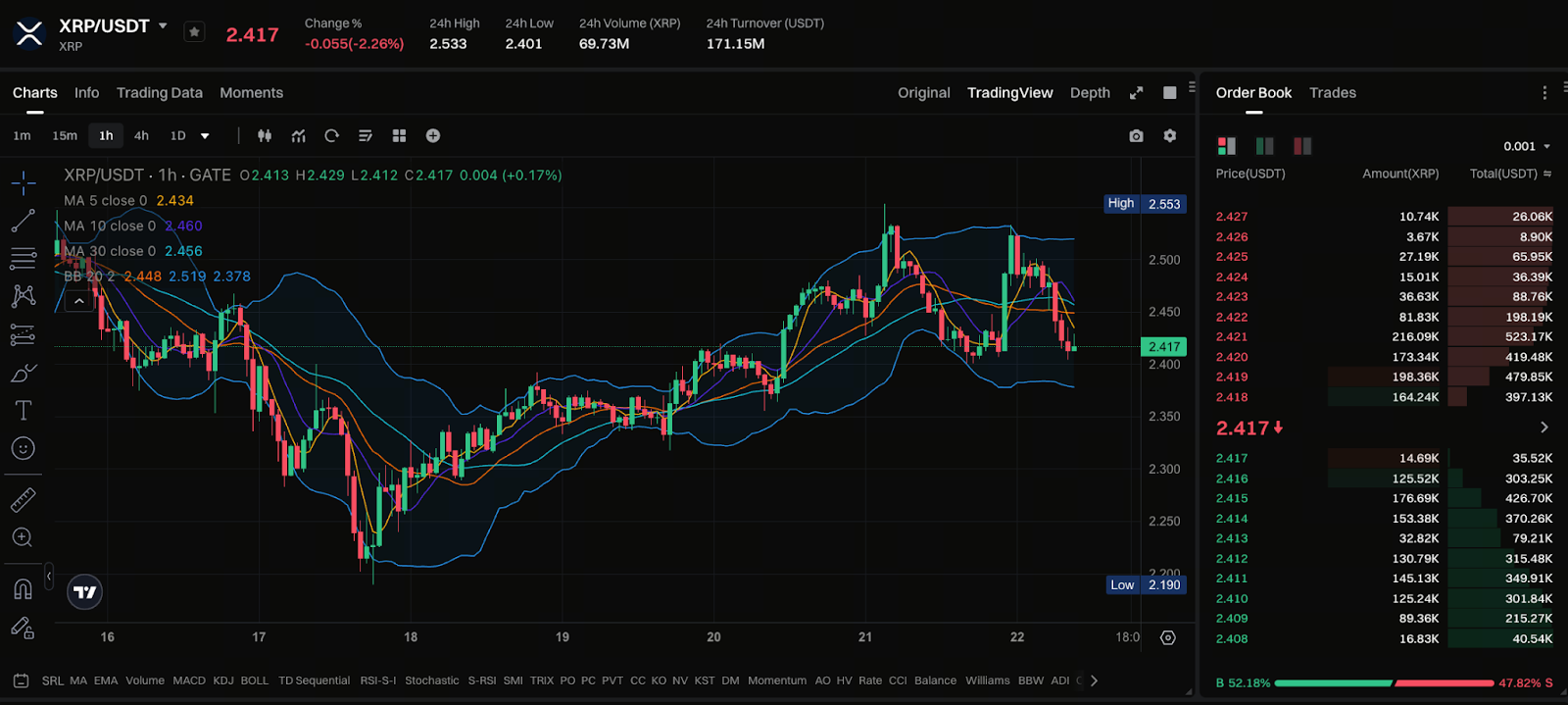Unveiling New Opportunities in XRP: Understand the Digital Asset Dividend with Ease
What Is XRP? Quick Start for Beginners
For those new to cryptocurrency, XRP—often called XRP or Ripple—is a digital asset backed by Ripple Labs and built on the XRP Ledger (XRPL). XRPL is engineered for ultra-fast settlement and minimal transaction fees, serving cross-border payment needs. In summary, XRP serves as a bridge currency for transferring funds between banks or payment platforms internationally, rather than being just a speculative token.
Latest XRP Price and Market Trends

Chart: https://www.gate.com/trade/XRP_USDT
Currently, XRP is trading at approximately $2.42. Key recent developments include:
- On-chain data shows wallets holding at least 10,000 XRP have hit an all-time high, now numbering about 317,500.
- Meanwhile, the share of XRP available for instant sale on exchanges has dropped from roughly 6.12% to 3.9%, signaling fewer “easy-to-sell” tokens circulating.
- As the broader market rebounds, XRP temporarily broke through the $2.50 level, propelled by declines in gold prices and Bitcoin strength that lifted risk assets.
- It’s important to note, however, that the overall crypto market has recently shown signs of a downturn.
Whales Are Making Moves! What Does Record Wallet Growth Mean?
For beginners, hearing that “wallet numbers hit a record high” may seem abstract, but it carries two major implications:
- Greater confidence: As more medium and large wallets (holding tens of thousands of tokens or more) enter the market, it indicates some investors are committed to holding long-term rather than trading for short-term gains.
- Potential supply decrease: When large amounts of XRP are locked or moved to cold storage wallets, the amount available for sale on exchanges drops, which can push prices higher if demand rises.
However, this doesn’t mean prices will rise immediately—it signals a possible positive trend. In theory, if new demand doesn’t emerge, reduced supply could also hurt liquidity.
How Should Beginners Approach XRP: Balancing Risks and Opportunities
For those just starting out, consider these points:
- Opportunities: XRP enjoys institutional attention, robust on-chain activity, and clear technical use cases—these factors can drive its price upward.
- Risks: XRP is highly volatile, and the crypto market overall is sensitive to macroeconomic and regulatory shocks. If XRP fails to break and sustain above the resistance level at $2.65, it may pull back.
- Strategy: Consider XRP as a long-term investment rather than a quick profit tool. Manage your position sizes, diversify rather than concentrate all funds in a single token, and always set stop-loss or exit plans.
- Stay alert to news: For instance, a recent theft from a Cold Wallet exceeding $3 million underscores the need for strong security practices.
Conclusion: What’s Your Next Move?
If you’re a beginner planning to keep an eye on XRP:
- Start by familiarizing yourself with digital asset operations through simulations or small investments—learn safe storage and how to access on-chain data.
- Monitor key price zones, such as support near $2.40 and resistance above $2.65.
- Additionally, track on-chain and institutional trends, including whale wallet activity and changes in exchange liquidity.
- Remain patient and avoid expecting immediate returns. Integrate XRP as part of your broader asset allocation.
In summary, while XRP is not guaranteed to generate returns, it is a digital asset worth monitoring for those who understand its operations and risk management. This article is intended to help you quickly understand XRP and begin your journey in the cryptocurrency space.
Related Articles

2025 BTC Price Prediction: BTC Trend Forecast Based on Technical and Macroeconomic Data

Flare Crypto Explained: What Is Flare Network and Why It Matters in 2025

Pi Coin Transaction Guide: How to Transfer to Gate.com

How to Use a Crypto Whale Tracker: Top Tool Recommendation for 2025 to Follow Whale Moves

What is N2: An AI-Driven Layer 2 Solution
